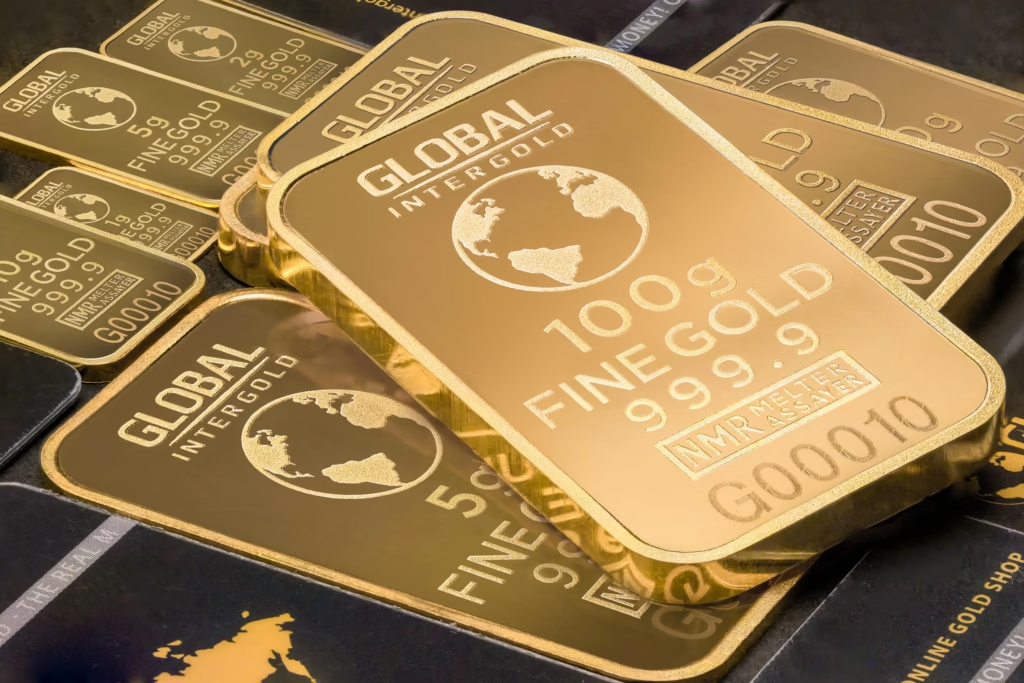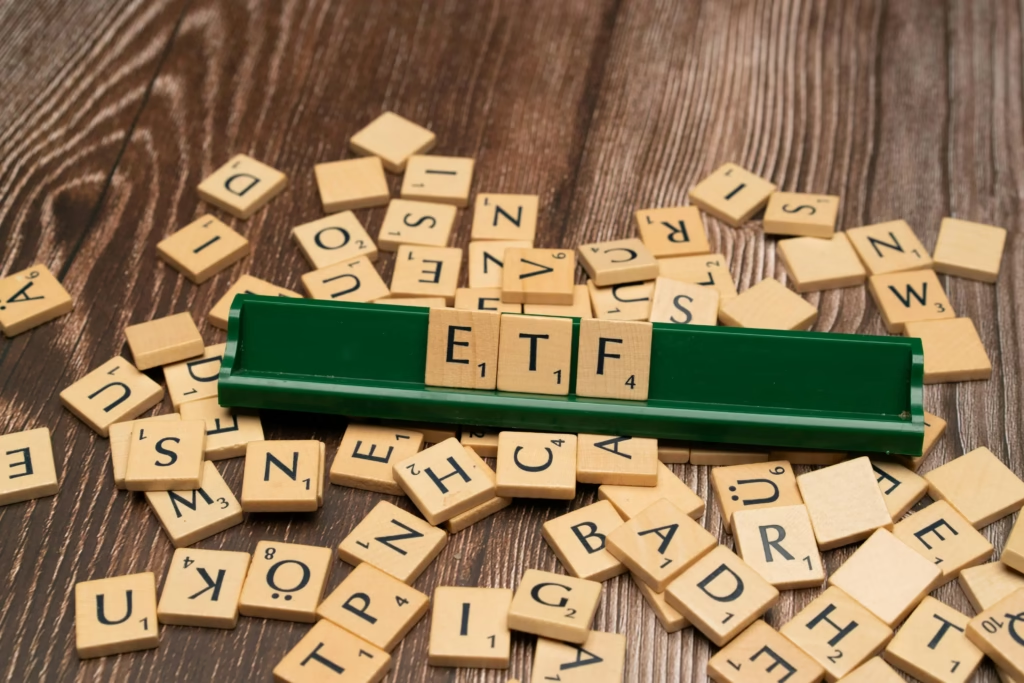Why Investing in Gold Still Shines.

The Golden Opportunity:
Gold has always been a symbol of wealth and stability. In today’s unpredictable financial landscape, its importance as a valuable investment cannot be overstated. Whether you’re a seasoned investor or just starting your financial journey, understanding the benefits of yellow metal investments can be a game-changer. In this blog post, we’ll explore why this timeless asset remains a shining star in the world of investments and how it can enhance your portfolio.
The Timeless Appeal of Gold
The enduring value of this precious metal is its most compelling feature. Unlike paper currency, which can be devalued by inflation or economic mismanagement, it has maintained its worth over centuries. It’s a tangible asset that doesn’t corrode, can be easily worked with, and has a unique, beautiful color. These physical properties, combined with its historical significance, make it a reliable store of value.
In an era of digital assets and complex financial instruments, the yellow metal’s simplicity and tangibility offer a sense of security. It’s a physical asset that you can hold, unlike the abstract nature of many modern investments. This tangibility gives it a psychological edge, making it a go-to asset during times of economic uncertainty.
Gold as a Hedge Against Economic Uncertainty
Economic landscapes can shift rapidly, and the metal’s ability to hold its value during turbulent times makes it an invaluable hedge. Whether it’s pandemics, geopolitical tensions, or financial crises, it has consistently proven to be a safe haven. The 2020s saw prices surge despite mixed global economic indicators. While the U.S. economy rebounded strongly after the pandemic, many other economies remained stagnant or teetered on the brink of recession.
In 2025, prices reached unprecedented heights, with spot rates hitting record highs of over $3,357.40 per troy ounce. This surge was significantly driven by the uncertainty caused by tariff wars, particularly those initiated by the Trump administration. These trade tensions created a climate of economic uncertainty, prompting investors to seek safe-haven assets. The status of the precious metal as a safe haven was further reinforced by its ability to maintain value amidst these geopolitical and economic upheavals.
Preserving Your Capital with Gold
Its role as a hedge against inflation is well-documented. When governments and central banks implement expansionary monetary policies, the risk of inflation eroding the purchasing power of fiat currencies becomes a significant concern. The yellow metal, with its limited supply, offers a means of preserving capital. Unlike fiat currencies, which can be printed at will, the global supply increases by only about a percentage point a year.
Even though prices declined in 2022 when inflation soared, they continued to rise as inflation began to ebb in 2023 and dropped further in 2024. This trend highlights the metal’s ability to maintain its value over the long term, making it a crucial component in a well-diversified investment portfolio.
Portfolio Diversification with Gold
One of the most compelling reasons to invest in this asset is its role in portfolio diversification. Its properties as an asset class make it an excellent tool for reducing overall portfolio risk and potentially enhancing long-term returns. The key to diversification is finding investments that are not closely correlated with one another, and the yellow metal fits the bill perfectly.

Historically, prices have often moved independently of stock and bond markets. For example, during the stock market crash of 2008, the value of the metal rose, providing a cushion for diversified portfolios. In the 2020s, as the market rose, this asset continued its unexpected upward trajectory. This lack of correlation means that when other assets are underperforming, the metal may hold its value or even appreciate, smoothing out portfolio returns over time.
Geopolitical Hedge with Gold
The status of the precious metal as a “crisis commodity” is well-established. Its value often rises during times of geopolitical tension or conflict, making it an effective hedge against geopolitical risks. Unlike fiat currencies, it is not tied to any particular government or political system, making it less vulnerable to political decisions or conflicts between nations.
Its historical precedent as a store of value during wars, revolutions, and other periods of geopolitical upheaval gives investors confidence in its ability to preserve wealth during turbulent times. Its universal recognition and high value-to-weight ratio make it easy to transport and trade, even in challenging circumstances.
Supply Constraints and Gold Prices
The supply of this metal has been a significant factor in its value. Much of the market supply since the 1990s has come from sales of bullion from central bank vaults. However, these sales slowed significantly after 2008, and production has had to increase to meet demand. Annual mining output has fluctuated over the years, peaking at 3,300 metric tons in 2018 and 2019 before growing again to 3,644 metric tons in 2023.
The limited supply, combined with increasing demand, has contributed to rising prices. U.S. reserves are estimated at 3,000 tons, with production at about 170 tons. Worldwide, reserves are estimated at 59,000 tons. These supply constraints ensure that the precious metal remains a scarce and valuable commodity.
Liquidity and Accessibility of Gold Investments
Liquidity and accessibility have improved dramatically in recent years, thanks to the advent of exchange-traded funds (ETFs) and digital platforms. These innovations have made investing in this asset more convenient and accessible than ever before.
ETFs, such as the SPDR Gold ETF (GLD), launched in 2004, track its price through the fund management company’s holdings. They offer several advantages, including ease of trading through regular brokerage accounts, no storage and security costs, and high liquidity. Mining stocks, such as Newmont Corporation (NEM) and Barrick Gold (GOLD), offer exposure to market prices with the potential for additional returns through company performance.
For more advanced investors, futures and options provide further ways to gain exposure, often with the benefit of leverage. These derivative products allow investors to manage price risks and participate in the market without physical backing.
How to Invest in Gold
There are several ways to add gold to your investment portfolio, each with its own advantages and potential drawbacks:

- Gold IRA: A Gold IRA is a unique way to invest in gold while also planning for your retirement. It allows you to hold physical gold in an IRA account, providing a hedge against inflation and economic uncertainty. For more information on Gold IRAs, check out our What is a Gold IRA article.
- Gold ETFs and mutual funds: These offer exposure to gold prices without owning physical gold. They’re highly liquid and can be easily bought and sold through brokerage accounts.
- Physical gold: This includes gold bullion, coins, and jewelry. While it offers the security of tangible assets, it requires secure storage and insurance.
- Gold mining stocks: Investing in companies that mine gold can provide leveraged exposure to gold prices, with the potential for dividends. However, these stocks carry company-specific risks.
- Gold futures and options: These derivative products are for more sophisticated investors, offering the potential for leveraged gains but also carrying higher risks.
The choice of investment method depends on your investment goals, risk tolerance, and preference for physical versus “paper” assets.
Beware of Gold Fraud
While this metal is a legitimate investment, the precious metals market is plagued by fraudulent schemes. Regulators worldwide, including the U.S. Commodities Futures Trading Commission (CFTC), have repeatedly warned investors of scams involving digital certificates and other dubious offers.
Investors should exercise extreme caution and due diligence before engaging in any related investments, especially those offered off U.S. regulated exchanges and other well-regulated industries, such as banks. Key warnings from regulators include:
- Beware of “easy profit” promises: Be skeptical of claims that you can profit from news events or guaranteed high returns.
- Check credentials: Verify the registration and background of any company or individual offering precious metals investments.
- Be wary of high-pressure sales tactics: Watch out for persuasion techniques like false urgency, claims of limited supply, or promises of special insider knowledge.
- Scrutinize financing agreements: Be cautious of offers involving financing agreements where you only pay a small percentage upfront.
- Verify storage claims: Insist on independent proof of the storage facility’s existence and your ownership.
- Understand the full costs: Be aware of additional payments you may be responsible for if prices move unfavorably.
Legitimate investments don’t require secrecy or pressure tactics. Always ask how the product meets your financial needs, what the person’s qualifications are, and how they are compensated.
Why Invest in Gold?
Investing in the precious metal offers a multitude of benefits that make it an attractive addition to any investment portfolio. Here are some key reasons why you should consider including it in your investment strategy:
The Yellow metal has a long history of maintaining its value over time, making it an effective hedge against inflation. Unlike paper currency, which can lose value due to inflation, gold tends to hold its purchasing power. When inflation rises, the value of fiat currencies often declines, but gold prices typically increase. This makes it a reliable store of value, especially during periods of high inflation.
Hedge Against Inflation
The yellow metal has a long history of maintaining its value over time, making it an effective hedge against inflation. Unlike paper currency, which can lose value due to inflation, this precious metal tends to hold its purchasing power. When inflation rises, the value of fiat currencies often declines, but the price of the metal typically increases. This makes it a reliable store of value, especially during periods of high inflation.
Safe Haven During Economic Uncertainty
This time-tested asset is often referred to as a “safe haven.” During times of economic and political uncertainty, such as recessions, financial crises, or geopolitical tensions, prices of the yellow metal tend to rise. Investors flock to it because it is seen as a stable and reliable asset. For example, during the 2008 financial crisis and the economic uncertainty caused by the COVID-19 pandemic, prices of this precious metal surged as investors sought to protect their wealth.
Portfolio Diversification
One of the most compelling reasons to invest in the metal is its role in portfolio diversification. Its prices have historically shown a negative correlation with other asset classes, such as stocks and bonds. This means that when other investments are underperforming, the yellow metal may hold its value or even appreciate. By adding it to your portfolio, you can reduce overall portfolio risk and potentially enhance long-term returns. Diversification helps smooth out portfolio returns over time, providing a more stable investment experience.
Protection Against Currency Devaluation
This valuable commodity is not tied to any particular currency, making it an asset of interest during times of currency devaluation. When the value of the U.S. dollar or other major currencies declines, prices of the precious metal often rise. This makes it an effective hedge against currency risk, especially for investors with significant exposure to a single currency.
Historical Stability
The yellow metal has maintained its value over centuries, making it one of the oldest and most stable assets available. Unlike many other investments that can be volatile or subject to market fluctuations, this asset has a proven track record of preserving wealth. This long-term stability makes it an attractive investment for those looking to protect their assets over the long term.
Industrial and Practical Uses
This metal has a variety of industrial and practical uses, including in electronics, dentistry, and jewelry. These applications create a consistent demand, which helps support its value. Additionally, the unique properties of the yellow metal, such as its resistance to corrosion and its ability to conduct electricity, make it a valuable material in various industries.
What Determines Gold Prices?
Prices of this precious metal can be volatile in the short term but have maintained their value over the long term. Movements depend on a variety of factors, including supply, demand, and investor behavior. Here are some key factors that influence its prices:
Supply and Demand
The basic principles of supply and demand play a significant role in determining prices. The metal is a finite resource, and its supply increases only gradually. As demand rises, particularly from investors, central banks, and industrial users, prices tend to increase. Conversely, if demand decreases, prices may fall.
Inflation and Interest Rates
Inflation and interest rates have a significant impact. During periods of high inflation, the value of fiat currencies declines, making this metal a more attractive investment. Additionally, when interest rates are low, the opportunity cost of holding the metal decreases, making it more appealing to investors. Conversely, when interest rates rise, the opportunity cost of holding it increases, which can put downward pressure on prices.
Economic Conditions
Economic conditions, such as recessions, financial crises, and geopolitical tensions, can significantly impact prices. During times of economic uncertainty, investors often turn to this asset as a safe haven, driving up its price. Conversely, during periods of economic stability and growth, demand may decrease, leading to lower prices.
Currency Strength
The strength of major currencies, particularly the U.S. dollar, can influence prices. When the U.S. dollar is strong, the metal’s prices often decline because it becomes more expensive for investors holding other currencies. Conversely, when the U.S. dollar weakens, prices tend to rise, making the metal a valuable hedge against currency devaluation.
Investor Sentiment and Market Trends
Investor sentiment and market trends also play a role. If investors have a positive outlook, demand may increase, driving up prices. Conversely, if sentiment is pessimistic, demand may decrease, leading to lower prices. Market trends, such as the popularity of ETFs and other investment vehicles, can also impact prices.
Central Bank Policies
Central bank policies and interventions can significantly affect prices. Central banks often hold the yellow metal as part of their reserves, and changes in their holdings can impact the market. For example, if central banks increase their reserves, it can drive up demand and prices. Conversely, if they sell off reserves, it can increase supply and put downward pressure on prices.
Conclusion
This precious metal remains a vital component of a diversified investment portfolio. Its timeless value, ability to hedge against economic uncertainty, and role in portfolio diversification make it an attractive asset. The recent surge in prices, driven by tariff wars and other geopolitical tensions, underscores its importance as a safe haven. As investors navigate an increasingly complex financial landscape, its stability and liquidity offer a sense of security.
To wrap up our exploration of why investing in the yellow metal is a smart move, we’ve gathered some additional resources for you to dive deeper into this timeless investment. Whether you’re looking for real-time pricing, expert analysis, or a comprehensive understanding of the metal’s role in your portfolio, these links will guide you on your journey.
- Investopedia: A comprehensive guide on why you should invest in the metal, covering its role as a hedge against inflation, economic uncertainty, and its importance in portfolio diversification. Read more
- GoldPriceG.com: A reliable source for real-time price data, offering insights into various weights, karats, and currencies. Read more
- APMEX: A trusted source for pricing and investment options, providing real-time spot price charts and information. Read more
- Money: An article discussing reasons to invest, including its role as a hedge against inflation, its liquidity, and its ability to diversify a portfolio. Read more
- LendEDU: An article exploring how gold serves as a hedge against inflation, maintaining or even gaining value while other currencies weaken due to inflation. Read more
- Investopedia: An in-depth explanation of the various factors that influence gold prices, including supply and demand dynamics, central bank policies, and economic uncertainty. Read more
We hope these resources provide you with the information you need to make informed decisions about investing in gold. Whether you’re looking to hedge against uncertainty, diversify your portfolio, or simply preserve your wealth, gold remains a timeless and valuable asset. Happy investing!







